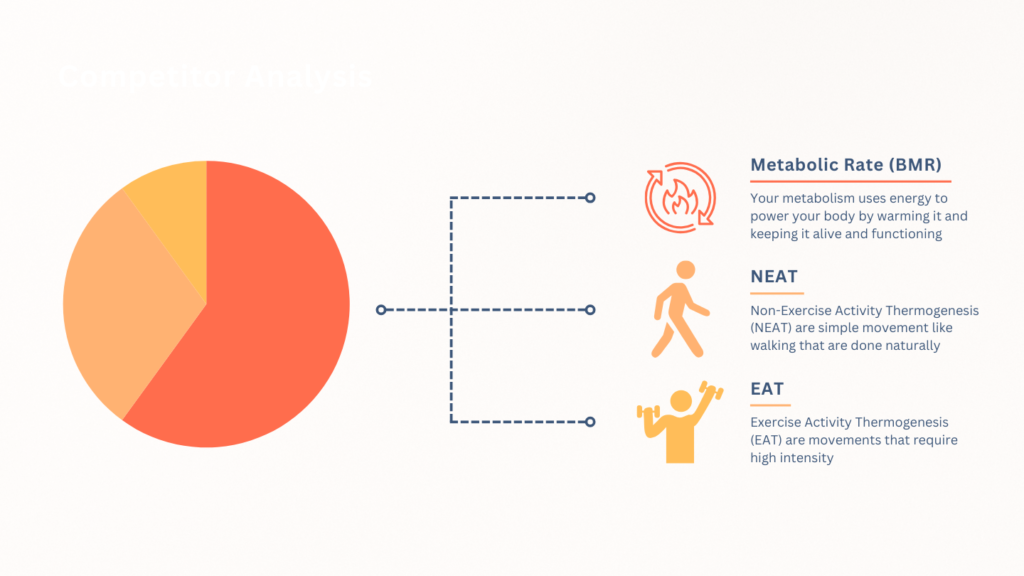Have you ever felt like your body is fighting your diet? You eat less, you move more, but the weight clings on or even worse, it comes back so fast after you celebrate losing it. You’re not broken. You’ve just not been told the rules of the game. You’ve heard it all before. Everybody tells you to eat less, move more. But if it is that simple, how come so many people are stuck in this exhausting cycle of weight gain? They try to lose weight. They may win for a short while with a bit of weight loss, and then the weight returns. They feel failure, and they blame themselves. What if the problem is not you but the oversimplified story you have been told about a much more complex digestive system? In this video series, we are going to uncover the hidden truth behind how your body stores fat. I’m Dr. Qutayba Almerie, a weight loss surgeon. help you understand the science behind obesity and your health. We will be discussing the two rules of fat storage in our bodies.
Calories in - Calories out = Fat storage
Let’s talk about the first rule, which is calories in minus calories out equals fat storage. An easy way to understand it and for me to explain it, I use an analogy to compare our buddies with a wooden house. So, imagine you live in a small wooden cottage. Every day, a delivery truck brings you the wood logs. These logs are your only source of energy. So, some of that wood you would use, chop it, and then use it to repair the house, maybe patch the walls, fix any leaks, and replace any tiles if they are worn out. And then another portion of the wood logs, you throw them in a fireplace, and that will keep your house warm. And then the other part of the wood logs, the portions, you use them to power a generator. So that generator will produce electricity inside your house, and that will be used for lights, TV, appliances, etc.

More logs than you can handle
But now imagine if the truck starts delivering a little bit more of logs than you would need daily to start with. You’ll be very happy. You’ll say, “Okay, I got a little bit of extra logs. I could store them somewhere. It’s no big deal. I might even use them if the winter is long or if it is very cold.” So, you’re still doing what you need to do in your house. But every day, that truck driver is bringing more logs than you need. So, now you kind of try to find a place to store them. First of all, you fill the shed. Now, the shed is full. And then you don’t have a space. So, you start filling the kitchen, the hallways, the bathrooms. Every place in that house is filled with these locks that you couldn’t use. But eventually, you can’t function inside that house. You can’t use the bathroom properly. You can’t use the kitchen properly. What seems to be a very good smart plan backup plan to start with, which is like let’s store a little bit more of that woodlock so we could use it in the future, became very hazardous and threatening to the function of the house. And in a nutshell, fat storage works in the same way. So when you eat more energy or more food than your body burns or uses for the different functions that I talked about in the first instance, your body tries to, in a simplified way, maybe store that fat under your skin. So you got what we call subcutaneous fat.
Subcutaneous fat does have some harm, but it’s not as harmful as when the body runs out of space and starts storing this fat around your organs inside your tummy and the organs themselves. And then as the body starts kind of throwing that fat in different places inside you, the function of these organs starts getting affected, and that is where the kind of extra weight becomes a harmful disease rather than just like an extra storage. The first rule of metabolism is that if more energy comes into your body than it needs, the excess energy will be stored somewhere. And over time, that excess of storage will start creating problems for your body. Calories in minus calories out equals fat storage.
But here is the important part of this. How can we control the calories out part of this equation? How can we maximise our ability to use the energy without having to store it as fat? What we need to understand is where the energy in our bodies goes. How much of that energy is used for the different tasks, and what control do we have over this? This will be explored in our next blog. Because once you understand this, you will finally see what you can realistically influence and the most effective ways to tip the balance in your favour without burning yourself out. If you find this helpful, please make sure to like, subscribe, and share it with someone who might need to hear this. See you next time.
